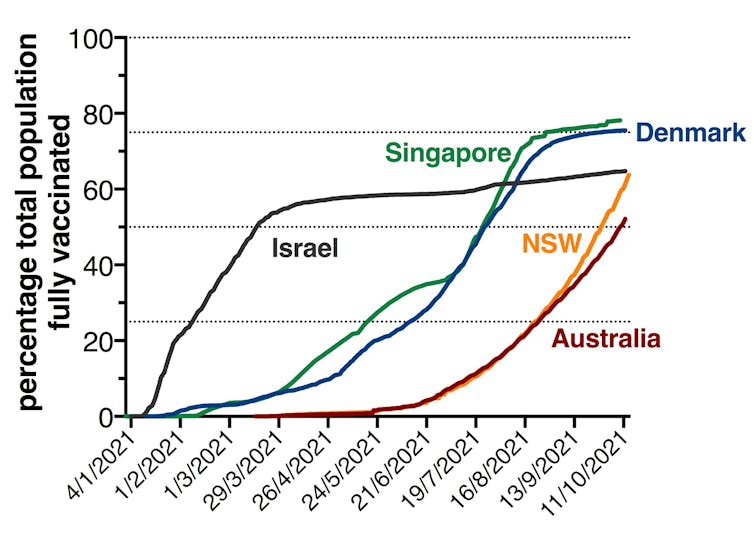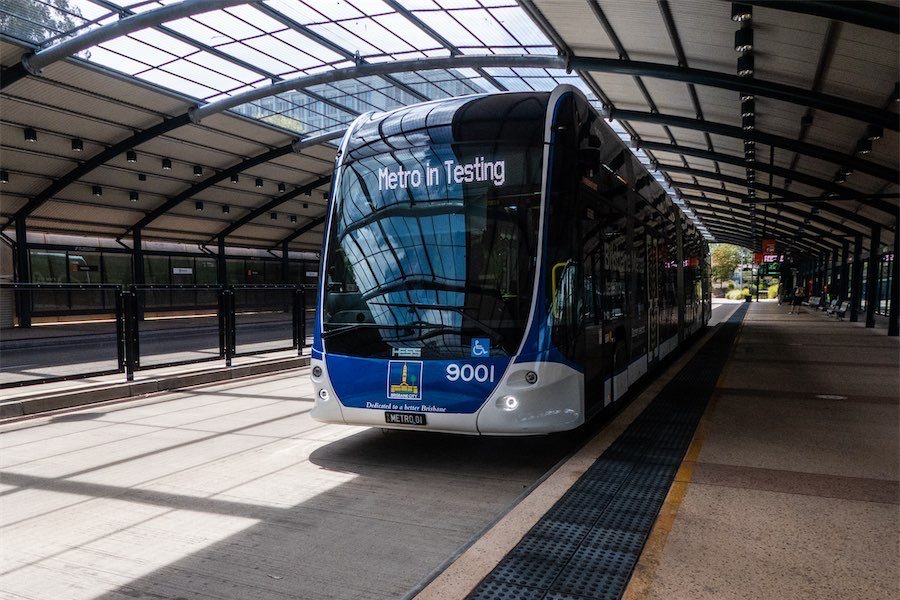Academics JAMIE TRICCAS and MEGAN STEAIN look at why Sydney’s covid numbers didn’t get as bad as the modelling suggested.
LAST Monday, Sydney emerged from a lockdown of more than 100 days after reaching the milestone of having 70 per cent of the over-16 population fully vaccinated.
Modelling predicted NSW would “open up” with around 1,900 daily cases when this target was reached.
However, the state recorded just 496 new local cases on that day. And the current seven-day average for NSW is 488 cases, with numbers trending downwards.
What’s more, other modelling suggested COVID-19 hospitalisations would peak between 2200 and 4000 in greater Sydney in late September.
On September 21, peak COVID hospital occupancy for all of NSW was 1268 patients. There are currently 711 COVID patients hospitalised in NSW, as of October 14.
We propose there are two main factors which might account for these discrepancies.
Vaccine effectiveness underestimated
Firstly, predictions of vaccine impact have typically used estimates of effectiveness against the Delta variant based on the UK Scientific Advisory Group for Emergencies (SAGE) roadmap, published in June. This suggested an effectiveness against hospitalisation of 87 per cent for Pfizer and 86 per cent for AstraZeneca.
However, more recent data across numerous countries has shown effectiveness against severe infection and hospitalisation is somewhat greater. A different UK study suggested 95% protection against hospitalisation for both Pfizer and AstraZeneca. And a study from the Netherlands found 96 per cent and 94 per cent protection against hospitalisation for Pfizer and AstraZeneca, respectively.
This difference may account for the disparity between the actual NSW hospitalisation numbers and those predicted based on the current vaccine rollout.
Real-time protection
The second reason for the current NSW situation could be a concept we’ve termed “protection in real-time”.
The rapid pace of vaccine uptake during NSW’s Delta wave ensured there was a large proportion of recent vaccines within the population.
This may offset the impact of waning vaccine immunity.
Optimal immunity after vaccination occurs at about two weeks after getting the second dose. But a partial protective effect of vaccination with Pfizer was apparent in clinical trials as early as 12 days after the first dose.
In addition, protection against severe infection may only require a lower level of immune response after vaccination.
How has this played out overseas?
The protection in real-time concept can be used to explain the impact of vaccination in other countries, which may provide a “real world” perspective of the future of the pandemic in Australia.
Denmark reached 25 per cent vaccination of the total population before the arrival of the Delta variant. During the Delta wave there were reduced hospitalisations and deaths compared to previous waves and a dissociation between case numbers and deaths.
 You can see the black line (cases) starts to separate from the green line (hospitalisations) and the red line (deaths) as the vaccine rollout progresses.
You can see the black line (cases) starts to separate from the green line (hospitalisations) and the red line (deaths) as the vaccine rollout progresses.
Data from ourworldindata.org/covid-vaccinations and covidlive.com.au, Author provided
NSW’s achievement of reaching the 70 per cent threshold last week actually equates to around 56 per cent of the total population of NSW. At the peak of its Delta wave in July, Denmark reached 50 per cent vaccination coverage of the entire population.
The restrictions in place at this time in Denmark were requiring proof of vaccination, past infection or a recent negative COVID test to enter certain indoor settings, such as restaurants and cinemas.
With a population size similar to greater Sydney, the coming months in Denmark may serve as an important comparison as to how the pandemic may unfold in Australia.
Similarly in Singapore, vaccination rates are high, at around 80 per cent of the total population, and the pace of the vaccine rollout is very similar to Denmark.
Singapore has seen a recent spike in cases since the relaxation of restrictions, with case numbers at their highest. However, 98 per cent of these cases are mild or asymptomatic. This suggests vaccines are having a major impact on lessening the severity of COVID, but a less pronounced ability to completely interrupt disease transmission.
Another example of the impact of real-time protection is the situation in Israel. Israel is often used as as the benchmark of vaccine effectiveness. Its vaccine program involved a rapid rollout of mRNA vaccines, predominately Pfizer’s. Initial studies in the country found the vaccine had high effectiveness against symptomatic COVID-19 and hospitalisation.
However, the arrival of Delta in Israel resulted in a large increase in COVID-19 cases with accompanying spikes in hospitalisations and deaths.
While this may provide some insight into the impact of Delta in Australia, there are key differences.
 Israel experienced a large increase in COVID cases, hospitalisations and deaths after the arrival of the Delta variant.
Israel experienced a large increase in COVID cases, hospitalisations and deaths after the arrival of the Delta variant.
Data from ourworldindata.org/covid-vaccinations and covidlive.com.au, Author provided
Why did hospitalisations rise in Israel?
Israel saw a large proportion of the eligible population vaccinated quickly. Around 50% of the total population was fully vaccinated by mid-March. But after this, there was a marked slow-down in uptake.
 The NSW and Australian populations have been vaccinated much more recently than Israel’s.
The NSW and Australian populations have been vaccinated much more recently than Israel’s.
Data from ourworldindata.org/covid-vaccinations and covidlive.com.au, Author provided
Thus, a combination of waning immunity and a large unvaccinated population may have exposed Israel to Delta.
While the Pfizer vaccine demonstrates excellent effectiveness against severe COVID-19, recent evidence from Israel suggests some waning of protection against severe disease over time, which prompted the introduction of the country’s booster program in July. A third dose was initially offered to over-60s, before being extended to everyone aged 12 and over.
In Australia, the widespread rollout of booster shots in the near future would be premature. The priority now is to get everyone eligible fully vaccinated, and consider boosters for targeted groups.
The federal government announced last week booster shots would be available to Australians who are “severely immunocompromised” from this week.
Governments should also consider a “mix and match” approach of booster shots. This strategy is being pursued in the UK, based on evidence that combining different vaccines may lead to stronger immunity.
Jamie Triccas, Professor of Medical Microbiology, School of Medical Sciences, Faculty of Medicine and Health, University of Sydney and Megan Steain, Lecturer, School of Medical Sciences, Faculty of Medicine and Health, University of Sydney This article is republished from The Conversation.
Who can be trusted?
In a world of spin and confusion, there’s never been a more important time to support independent journalism in Canberra.
If you trust our work online and want to enforce the power of independent voices, I invite you to make a small contribution.
Every dollar of support is invested back into our journalism to help keep citynews.com.au strong and free.
Thank you,
Ian Meikle, editor





Leave a Reply